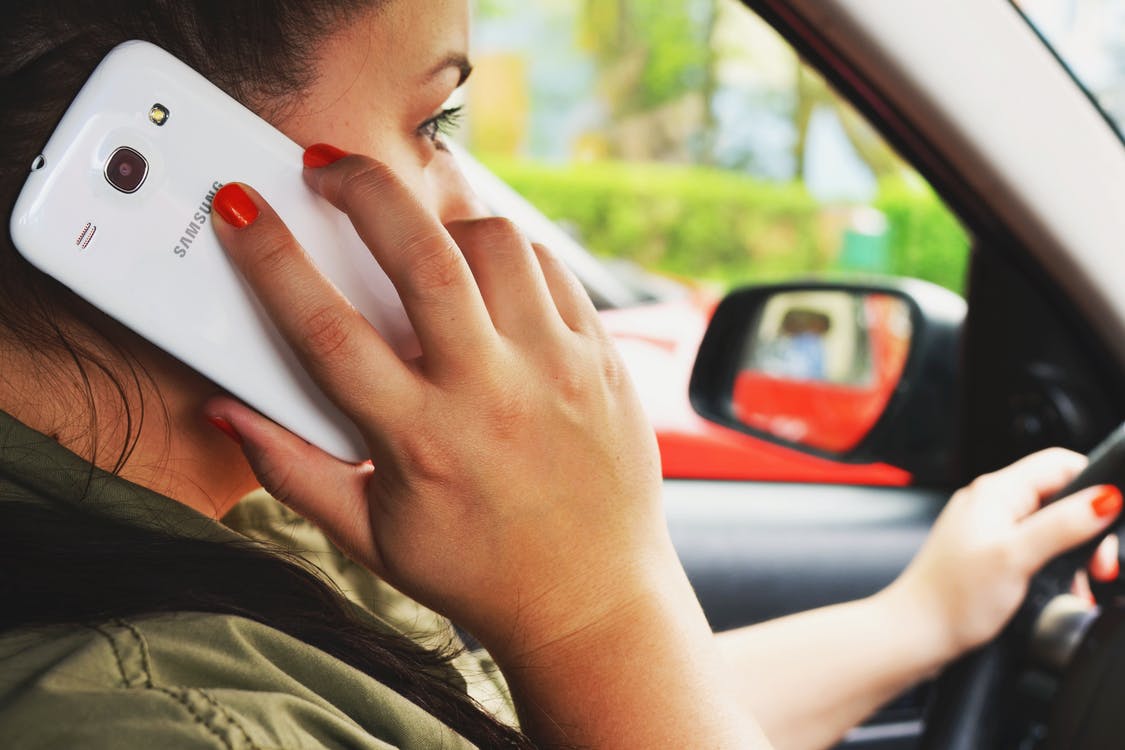Distracted driving is one of the leading causes of road fatalities, next to speeding, impaired driving, and driving without a seatbelt. In the province of Ontario, every half hour, one person is injured in a distracted driving accident (Service Ontario). In the city of Toronto, on average 16,000 tickets per year are issued for distracted driving and since 2011, 109,000 charges have been laid (Kwong and Doherty, 2017).
The Ontario Ministry of Transportation, qualifies distracted driving as using “hand-held communication and electronic entertainment devices” while driving or viewing display screens, not related to your driving. Examples of hand-held devices include: IPods and MP3 players, GPS, cell phones, laptops and DVD players (Ontario Ministry of Transportation). That means that actions such as “talking, texting, checking maps and choosing a playlist” are strictly prohibited while behind the wheel and count as distracted driving.
In essence, distracted driving can be defined as any act the driver engages in which causes their judgment to be compromised, when not focused on the road. Even though the Ontario Highway Traffic Act specifically outlines the use of a hand-held or electronic entertainment device, actions such as eating/drinking, reading (e.g. books, and newspapers), smoking, personal grooming and watching videos or movies are also qualified as distracted driving by the Royal Canadian Mounted Police (RCMP) and drivers can still be charged depending on the province they are in (Insurance Bureau of Canada).
How can I minimize my risk of engaging in distracted driving?
As recommended by the Ministry of Transportation of Ontario:
- You can use your cell phone with an earpiece, headset, or Bluetooth device which uses voice-activated dialing
- Only use your hands-free device to activate or deactivate calls
- Enter the required information into your GPS beforehand and mount it on your dashboard or windshield
- Activate the playlist of your portable media player before driving
Above all, avoid any action that can cause you to take your eyes off the road or hands off the wheel and always make sure to be alert at all times!

In what instances can I use my hand-held device while driving? (Exceptions to the Rule)
Use of your hand-held device while you have stopped at a traffic light is permitted if you are dialing an emergency number such as the police, fire department or an ambulance. Otherwise, if you desire to make a call, you must safely pull off the roadway so as not to obstruct traffic. Bear in mind however, that you are not permitted to stop on the shoulder of 400-series highways.
What charges will apply if I break the distracted driving law?
Fully licensed drivers (A, B, C, D, E, F, G) will be charged a total of $490 if settled out of court. If you are summoned or decide to fight the ticket and are unsuccessful, you will be fined $1,000. In both instances, three demerit points will be added to your driver’s record. Holders of a G1, G2, M1 or M2 licence will face the same monetary charges, in addition to your licence being suspended for 30 days for a first conviction and 90 days for a second conviction. If you are convicted of distracted driving on a third occasion, your licence will be revoked and you will be removed from the Graduated Licensing System (GLS). In order for your licence to be reinstated, you would have to reapply.
In more severe instances, if you endanger the lives of others while operating a hands-held or electronic entertainment device, you could be charged with Careless Driving under the Highway Traffic Act and Dangerous Driving under the Criminal Code of Canada. Careless Driving could incur a fine of up to $2,000, 6 demerit points and a possible jail term of 6 months, in addition to having your licence suspended for two years. Dangerous driving is a criminal offence and can attract a jail term of up to 5 years (Ontario Ministry of Transportation).
Will being charged for distracted driving affect my Insurance Premium?
Yes, if you are charged for distracted driving this will be reflected on your driving record. Insurance companies use a myriad of factors to calculate your insurance premium such as your address, age and gender, safety features installed in your car, use of your car, the type of car you drive, your driving history and the type of driver’s licence you possess. Your driver’s record includes information on how many driving offences you have committed as well as the amount of parking tickets and licence suspensions incurred. According to the Insurance Bureau of Canada, “building a consistently accident-and-conviction-free driving record can help reduce your premium”. At My Insurance Broker, we reward our safe drivers. Contact a My Insurance Broker adviser today to find out how you can qualify for auto insurance discounts.
